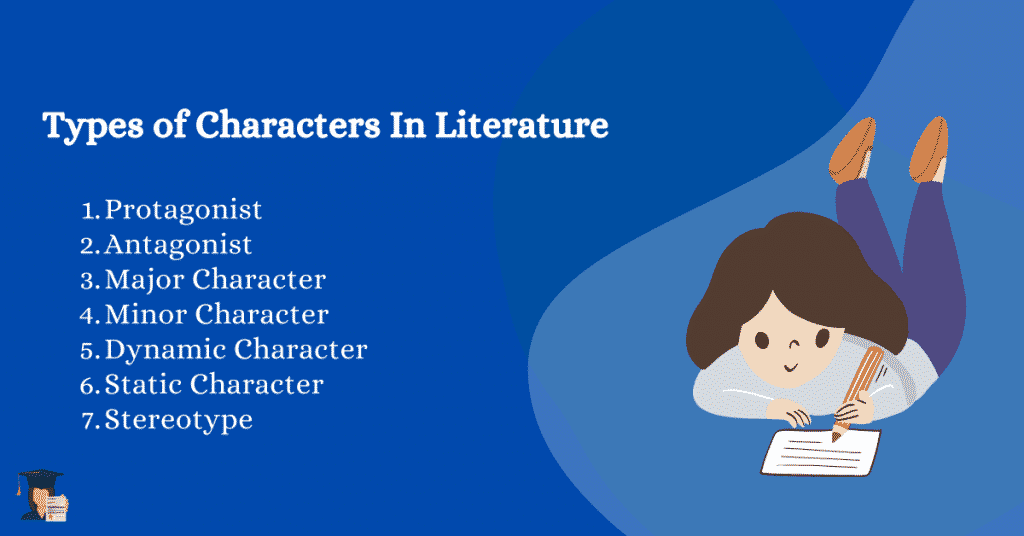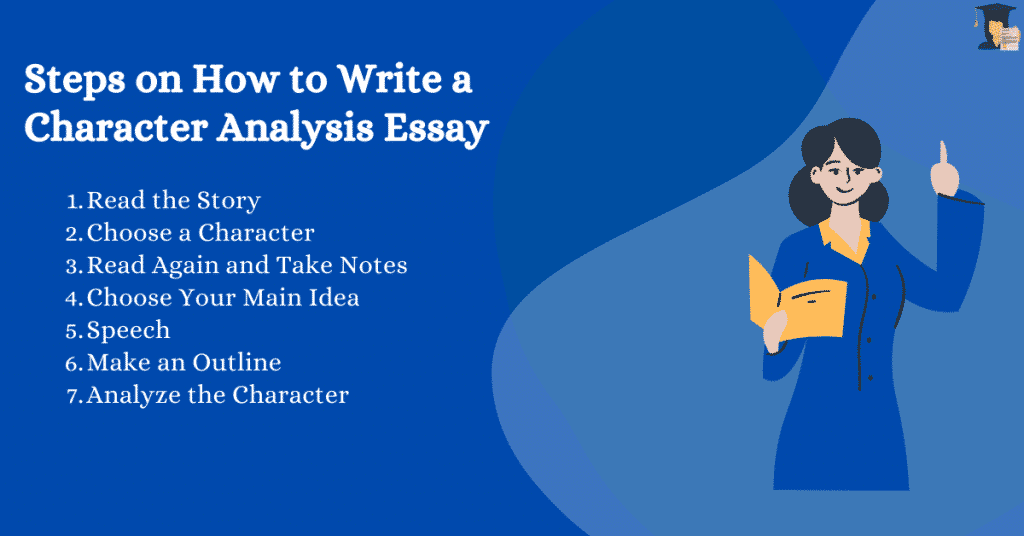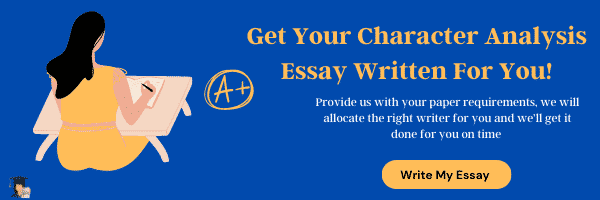Writing a book becomes easy when you understand how to write a character analysis essay. Character analysis is the evaluation of specific attributes or traits of a literary character. It involves consideration of elements like their role play in the story and the different conflicts they go through.
A character analysis essay is one where Literature or English students discuss a character in a story or text. You do this by examining the connection between other characters and the character in question. Usually, the characters are obtained from books. However, it can also be from other forms of art like cinematography. However, if even after reading through this guide you feel stuck or unable to make progress we would be happy to offer our essay writing services to you that will have it written by our professional team.
What is the Purpose Of a Character Analysis Essay?
Nevertheless, before you learn how to write a character analysis essay, you should know the purpose of what you are writing. The following are the objectives of a character analysis essay:
Describe the Character
A character analysis essay describes the respective character in detail. It provides information about their behavior, looks, manner of speaking, the relationship with other people, etc.
Helps Understand the Character Better (Emotionally, Mentally)
A character analysis essay provides your audience with a better understanding of the character in question. Furthermore, your in-depth study reveals details about the character allowing readers to know the character better.
Break Down the Anatomy Of a Character
One of the key objectives of a character analysis essay is to examine the anatomy or makeup of the character in question. It helps you to dissect who the character is. You should be able to study what factors shaped the character and learn from them.
Helps Understand the Character’s World
A character analysis essay also provides details about the character’s world and the factors that influence their behavior, beliefs, and actions.
Types of Characters
A character is any person, figure, or animal featured in a literary work. There are different types of characters in literature all having their specific function and development.
Characters can be classified in three different ways, based on the function they play, the quality(that is, whether they change or stay the same during the story), and based on archetypes. The main characters are usually compelling and three-dimensional. Moreover they are the characters to whom readers get attached. There are supporting characters as well.
There are different types of characters in literature, and the most common are:

Protagonists
Description
The protagonist is the central character, the leading figure on whom the story revolves. They are most times heroes, but they must not be. The action is centered on them. If the story is in the first person, then the protagonist is usually the narrator. However, that is not applicable in all cases.
Contribution
Because protagonists take center stage in literature, they give direction to the literature. For the same reason, without the protagonist, the story lacks a plot. They make decisions that carry the story forward. All the other characters take their bearings from the protagonist. Therefore, if you want to write a character analysis essay or a book , the protagonist is the first character to develop.
Examples
Common examples of protagonists from popular literature include:
- Katniss Everdeen – Hunger Games
- Harry Potter – Harry Potter Books
- Frodo Baggins – The Lord of the rings
Antagonist
Description
The antagonist opposes the protagonist on all fronts. They try to thwart, undermine, battle and oppose the protagonist. In most cases, the antagonist represents evil, whereas the protagonist symbolizes good. This opposition creates a conflict between the two. However, on analysis that may not always be the case, notably when the protagonist lacks the peculiar heroic features and is an anti-hero character or the antagonist has noble virtues and is an anti-villain.
Nevertheless, in 95 percent of cases, the antagonist is the villain while the protagonist is the hero. Yet, it is important to note that the antagonist must not always be a person. The protagonist may experience internal struggles like depression, addiction, anxiety, loneliness, or even a disease. However, whatever form the antagonist takes, they are still the source of roadblocks and drama in the story.
Contribution
The antagonist provides conflict in the story or literature. They provide drama and oppose whatever the protagonist is set to do.
Examples
- Sauron – The Lord of the rings
- Voldemort – Harry Potter Books
Major Character
Description
A major character is a central figure in developing a story’s theme or action. The principal character may sometimes be called a protagonist whose opposition by the antagonist creates conflict.
This character is key to the development and resolution of the conflict in the literature. A bulk of the action revolves around the principal character or characters. Their joint activities drive the plot, helping to forecast the overall outcome of the literature. Significant symbols are not limited to the protagonist and antagonist. They usually possess their subplots.
Contribution
The primary characters drive the plot. Their activities create conflict within the literature. Consequently, there is no story without the key characters.
Examples
- Protagonist examples above
- Antagonist examples above
Minor Character
Description
The minor characters are secondary to the significant characters. They are often unchanging, remaining static from the beginning to the end of the story. They don’t have subplots, and their actions are not contributory to resolving the conflict. Consequently, the character fades out and into the story as the story unfolds.
Contribution
The minor characters function to illuminate the significant characters. They help to create a particular viewpoint in the story.
Example
Samwise Gamgee – The Lord of the rings
Dynamic Character
Description
Throughout the story, dynamic characters usually change their behavior, attitudes, personality, purpose, or beliefs. The character grows and might transform as the story progresses.
Contribution
The character imparts a sense of mystery to the storyline as you don’t know the outcome of the change. Neville Longbottom is the best example of a dynamic character.
Example
- Neville Longbottom – Harry Potter Books
Static Character
Description
A static character remains the same throughout the story. Therefore, no matter the events, their personality, attitude, purpose, and behavior remain static.
Contribution
Static characters reveal contrast that highlights the protagonist’s traits, motives, and background. This character helps to create a focused and tight story. Static characters fill stereotypical roles like the villain, the hero, the lover, the child, the sidekick, the rebel, etc.
Example
- Atticus Finch – To Kill a Mockingbird
- Oedipus – Oedipus Rex by Sophocles
Stereotype
Description
Also known as stock characters and can be flat characters. Unlike the other characters, this character is not of much value in the story. As a result, flat character(s) are often used repeatedly during the story on analysis.
Contribution
Stereotypes or stock characters are used to progress the plot. They take up space without seemingly affecting the plot in any way.
Example
Professor McGonagall – Harry Potter Books
How To Write a Character Analysis Essay – Full Guide
Now, we will discuss how to write a character analysis essay in detail.

Step 1. Read the Story
It’s always better to begin by reading the book. That is because there’s a character that you need to focus on, so reading the book will be most beneficial. Concurrently, you’ll be more accurate when reading the scenes that feature your character, which is very useful for the analysis.
Additionally, it would be best to consider the author’s specific attributes for the character and the relationships your character has with others . Furthermore, it would help consider how the author’s actions contribute to the plot’s advancement.
Step 2. Choose a Character
When selecting a character, you should choose a dynamic character. Of course, that does not mean it must be a protagonist. It should be a character that undergoes profound changes, is not static or dull, and has grown throughout the plot.
The advantage of this is that it helps you show the evolution of your character, which makes your essay engaging and entertaining. Thus, I recommend not choosing a monotonous character because your essay will be bland and uninteresting.
Step 3. Read Again and Take Notes.
After selecting a dynamic character, you should reread the book, paying attention to your chosen character. Also, it would be best if you took notes while reading.
Additionally, you can also underline or highlight the story’s critical elements. At this point, your character description will be more detailed. After reading, review your notes and synthesize your main idea about the character.
Step 4. Choose Your Main Idea/Thesis Statement
While reading the book and taking notes, you should look at them and search for patterns. Following this, select the idea that represents your character the most. That idea will form your thesis. Afterward, support this main idea with situations and examples involving your dynamic character from the book.
Step 5. Make an Outline
Before beginning your writing, you should draft outline. This step is without a doubt, one of the most critical steps in your writing. That will help to organize your thoughts and ideas.
Introduction.
- The introduction presents your character to the audience
- You should indicate why the character is worth exploring.
- Moreover thesis should be a part of this section.
- You should point out something interesting about the character and indicate the bearing of your essay.
- Equally important should be concise and stimulate the interest of your audience
- Include a brief description of the character
- In any case avoid making the introduction too lengthy
Body
- The body of the essay consists of paragraphs.
- Each paragraph should discuss a specific feature or idea of the character
- Your body should ask the following questions:
- Firstly, what is the personality, background, and physical appearance of the character?
- Secondly, what are the conflicts the character faced, and how were they resolved?
- Thirdly, what lesson can be learned from the character?
- Subsequently, what motivates your character?
- In addition, meaning does the character’s action show?
- Furthermore, what does the character do?
- How does the character treat others, and what is the relationship with other characters?
- How does the character describe themselves?
- What words can be associated with the character?
- What does the character say, and what is the diction?
Conclusion
- It would help if you concluded your essay after thoroughly discussing the character’s evolution.
- Undeniably, summarizing all of your points to support your thesis would greatly help.
- It should hold together all your ideas
- In conclusion, you should also include things about the conflict experienced in real life.
Step 6. Analyze the Character
It would help if you also analyzed the character by considering the following elements:
Character’s Personality
In exploring the character’s personality, you should feature an in-depth description of your character’s personality at present. Evidently, it would help if you mentioned specific examples of their interactions with other characters. Additionally, you should include the character’s purpose, physical appearance, emotions, manner of speaking, behavior, and morality that ultimately play a key role when writing a character analysis essay.
Type Of Your character
You should also state what type of character they possess. The various characters include:
- Protagonist
- Antagonist
- Stock character
- Static character
- Dynamic character and others
Character’s Role
You should also state the role your character is playing in the plot.
Character’s Development (Growth and Change)
You should also include the development of your character. Following this, was there growth? Subsequently, was there a change in personality, beliefs, perspective, and others?
Conclusion
Writing a character analysis essay is a top-notch skill for every aspiring writer. If you follow the steps and tips discussed in this article, you will have no problem with how to write a character analysis essay.

What Are the Elements Of Character Analysis?
Character analysis evaluates a character in terms of their traits, role in the story, and the conflicts they face. Following this, when analyzing, you should think thoroughly, ask appropriate and relevant questions, and draw reasonable conclusions about the character.
Elements to consider when analyzing a character includes:
- Physical appearance
- Actions
- Inner thoughts
- Reactions
- Speech
What Are the Three Parts Of the Character Analysis Outline?
- Introduction
- Body
- Conclusion
What Questions Are Asked In a Character Analysis?
- Firstly, what is the personality, background, and physical appearance of the character?
- Secondly, what are the conflicts the character faced, and how were they resolved?
- Thirdly, what lesson can be learned from the character?
- Subsequently, what motivates your character?
- In addition, meaning does the character’s action show?
- Furthermore, what does the character do?
- How does the character treat others, and what is the relationship with other characters?
- How does the character describe themselves?
- What words can be associated with the character?
- What does the character say, and what is the diction?



